When you’re in the market for a new bike, one of the factors you should consider is “how much does a bike weigh?“. Below will show you common types of bike weigh, including road bikes, hybrid bikes, mountain bikes, carbon road bikes, and steel road bikes…
Depending on the type, a bike may weigh 17 pounds or 80 pounds. The lightest bikes are road bikes, which weigh on average 17 lbs. Mountain bikes typically weigh 25 lbs, making them heavier. The weight of beach cruisers and hybrids is about 25 lbs. The heaviest bikes, weighing up to 80 lbs, are e-bikes.
Continue reading for more details.
Table of Contents
How Much Does a Bike Weigh?
Your bike’s weight is significantly influenced by its type. Due to their use on rocky roads and in harsher environments, some bikes are heavier than others.
To know more, here are the different types of bikes and their corresponding weight:
Road Bike

On average, a road bike usually weighs around 18 lbs, including all components such as cages and pedals. This kind of bicycle will have more lightweight frames and smaller tires than almost any other kind because it is typically designed for riding on paved surfaces and city streets. Because of this, you can handle it while riding very quickly.
Bike weight may not be a major consideration if you are a beginner or simply looking for a minimalist or simple bicycle. In fact, if you want to ride a bike as a hobby or for fun, getting a heavier bike might be even better. This is due to the fact that heavier bikes will give you more opportunities to exercise.
On the other hand, for road racers, bike weight is a crucial factor. A bike’s overall weight must be reduced for real racing, which is why it is not only crucial when they are practicing for their competition. As a result of less wind resistance, they can ride faster.
For those who don’t know, the International Cyclists Union set a minimum weight limit of 14.99 lbs for road bikes to be eligible for racing. Because of this, you can purchase a bike that is even lighter than the typical road bike weight.
Related Can You Ride Dirt Bikes on the Road?
Hybrid Bike
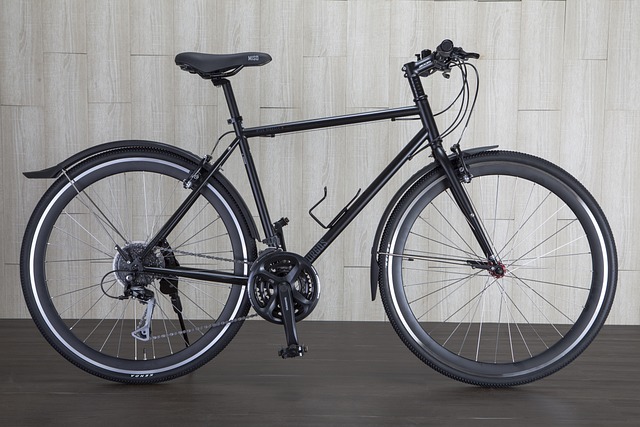
Because it combines elements of both road and mountain bikes, a hybrid bike is heavier. It has an average bike weight of 29lbs due to its style and design. Compared to cruiser-style hybrid bikes, which weigh 32 pounds, road bike-style hybrid bikes weigh 26 pounds.
To make riding more comfortable, most hybrid bikes have wide tires, large paddled seats, and simple handlebars. Hybrid bicycles can be used for leisurely rides, community exploration, and local coffee runs.
However, hybrid bikes are less effective for use on both paved and unpaved roads than road bicycles. Hybrid bikes cannot be used on challenging off-road bike trails.
Read about Best Hybrid Bike For Women
Mountain Bike
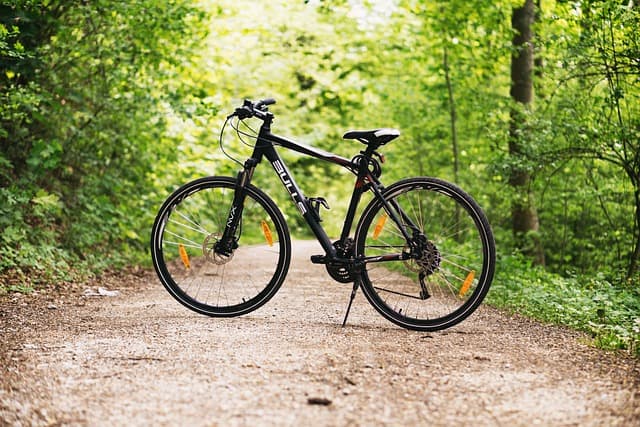
Mountain bikes are heavier than road bikes for a number of reasons. A mountain bike often has extra gears to help the rider pedal up steep dirt trails. Large tires and occasionally suspension are also included to ensure a comfortable ride.
With the suspension, larger tires, and extra gears most mountain bikes weigh an average of 21 to 29 pounds. Are Mountain Bikes Good For Commuting?
Since mountain bikes are made to handle rough terrain and rocky roads, they are typically heavier than other bike types. The variance in weight between mountain bikes will depend on whether the bike is a hardtail (suspension only in front) or full suspension.
Read about: Best Downhill Mountain Bike
Carbon Road Bike
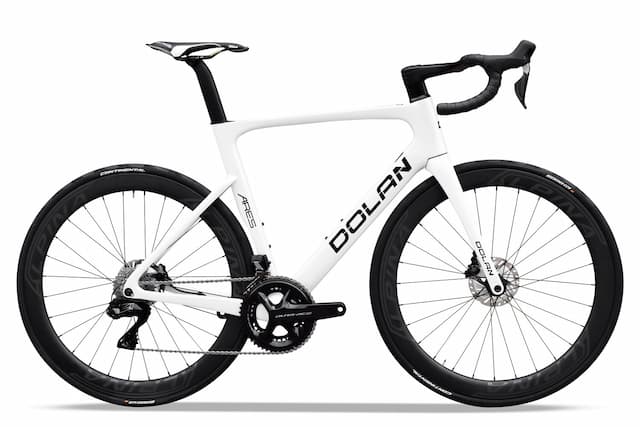
The weight of the carbon road bike is average. The structure as a whole gains weight from the weight of the bicycle parts, such as the size, material, wheels, gears, and accessories. Carbon road bikes are more expensive than other types of bicycles but are lighter.
The substance used also guarantees a more comfortable and comfortable ride. Long-lasting toughness and durability are offered by it. With this kind of bike, speed and light weight are guaranteed.
Steel Road Bike

One of the heaviest bicycle types is the steel road bike. It has long been the top material used in bikes and has a maximum weight limit of 29 pounds. Although steel frames are heavy, they are not as strong and long-lasting as carbon, titanium, and aluminum frames.
Steel road bikes are advised if you want a bike that you can use to lose weight and exercise on. You can burn fat more quickly with this large machine.
Gravel Bike

The typical weight of a gravel bike ranges from 8.10 kg to 10.55 kg. They are slightly more robust than road bikes, so they weigh more. To withstand more demanding riding, some components must be durable. Tyres and wheels are typically heavier than those on road bikes. The smallest gravel bikes are designed for competition.
Gravel bikes are adaptable and provide more mounting points for accessories like fenders, mudguards, and carrying racks. Since they are about the same size and shape, the average cyclist won’t notice much of a weight difference between a road bike and an average gravel bike. Many contend that gravel bikes are the best all-arounders, pound for pound.
Read about Best Gravel Bikes Under 1000
Electric Bike
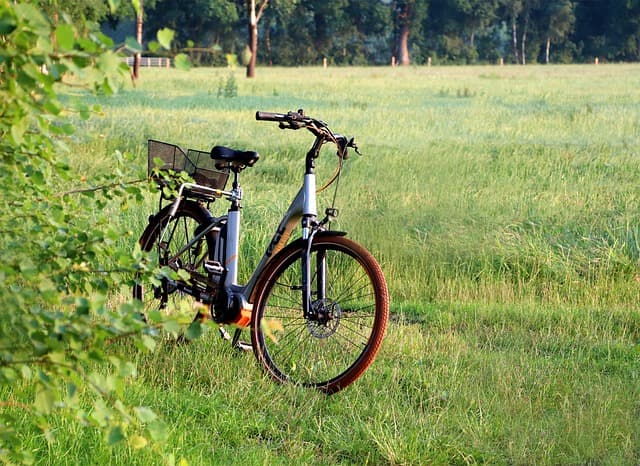
E-bikes are heavy because they are larger than regular bikes and have a battery attached to them.
Depending on the type of e-bike you are looking at, an e-bike weighs as low as 40 lbs. and as much as 80 lbs.! But, how fast does an e-bike go?
Depending on the type of e-bike you buy, there will be a weight difference. E-bikes that fold up are designed to be lighter and easier to transport. These folding e-bikes weigh in at around 40 lbs. mark.
E-bikes have the advantage of helping you pedal even though the battery weighs more. Using an e-bike that weighs 80 pounds? Use that battery power wisely, and you’ll experience the sensation of flying. How much does an electric bike cost?
Read about
Kid’s Bike

Bikes for children typically weigh between 18 and 26 pounds.
A bike designed for a 60 lb. person is surprising. kid can weigh half his/her weight! There are two factors that contribute to children’s bikes weighing the same as adult bikes.
The weight contributes to the bike’s stability, which is the first justification. As they learn to ride a bike, children want the weight of the bike to keep them grounded. The stability and sturdiness of a lighter bike will be reduced.
Secondly, kids bikes are heavy because they’re going to be abused. Kids are more likely to crash bikes or toss them around, hopefully not frequently. Kid’s bikes are built to withstand abuse, according to manufacturers.
Having said that, some bike manufacturers do offer lighter children’s bikes. Weight shouldn’t matter for a kid who just wants to ride his bike around the neighborhood unless your child is a bike racer.
Read about
- What Size Bike For A 4 Year Old?
- What Size Bike Does a 6 Year Old Need?
- What Size Bike For 7-Year-Old?
Fixies
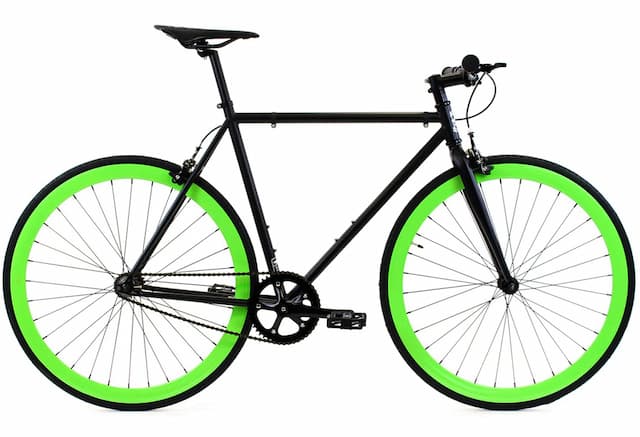
In general, fixies weigh between 7.95kg and 10.5kg. Due to the absence of gearing and (some) braking components, they are lightweight across the majority of ranges. The lightest fixies typically do not have carbon fiber frames. They are sturdy, mobile city vehicles that aren’t designed to maintain speed.
For those who frequently use fixies, the weight is crucial. If they have to pick one up dozens of times a day, a cycle courier will appreciate their relative lightness. Less components also means fewer trips for upkeep and repairs.
Recumbent Bike
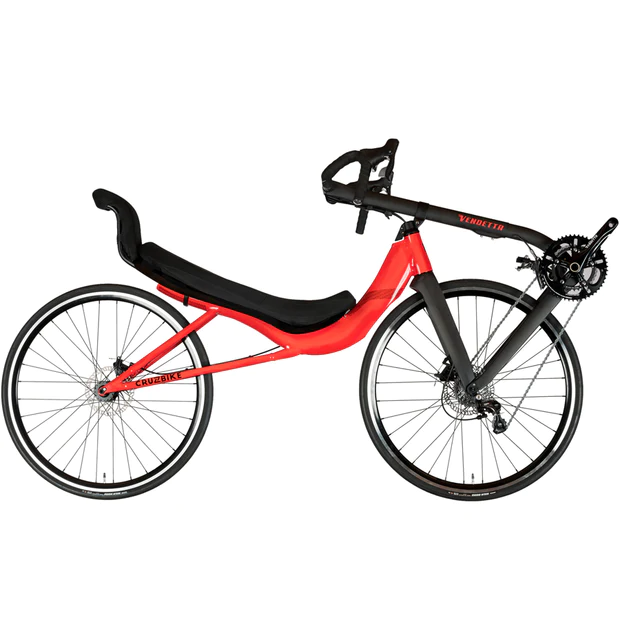
The rider of a reclined, laid-back bicycle can pedal while seated on one.
Because their back and bottom will be supported, the rider’s own weight will be dispersed over a larger area. The rider’s weight is primarily supported by their feet and butt on a standard bicycle.
Between 25 and 45 lbs. are the weight range for recumbent bicycles.
A recumbent bike is heavier than a conventional bike because of its construction. Recumbent bikes have two advantages despite their weight.
The first is that they are significantly more comfortable due to the rider’s position.
In comparison to riding an upright bike, they have less wind resistance. The rider and bicycle can ride on a flat surface with a 30% reduction in wind drag because they are closer to the ground.
Check for Best Recumbent Bike
City Bikes
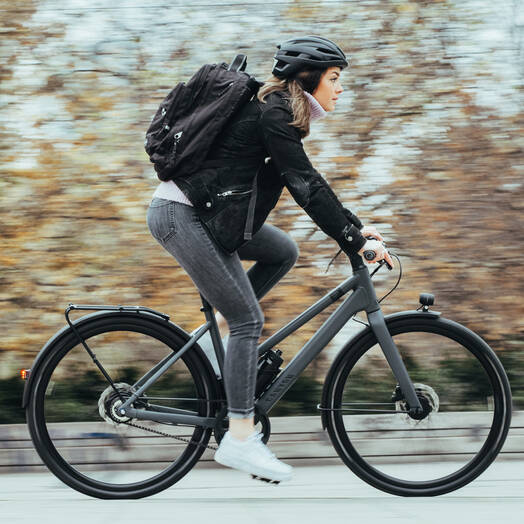
City bicycles typically weigh between 9.47kg and 12.84kg. Some of the technologies used to create the lighter road bike trickle down to this price range. It shouldn’t be necessary to consider weight so heavily. In more constrained spaces, maneuverability is crucial. In urban areas, reaching a top speed is less crucial.
The average city bike’s weight will be well within the range of most riders’ comfort. The geometry is made for comfortable riding, and new cyclists will appreciate how simple pedaling is. It might be difficult to climb steep hills and flyovers on a heavier city bike loaded with supplies or equipment. The majority of them are equipped to handle the urban environments.
BMX Bike
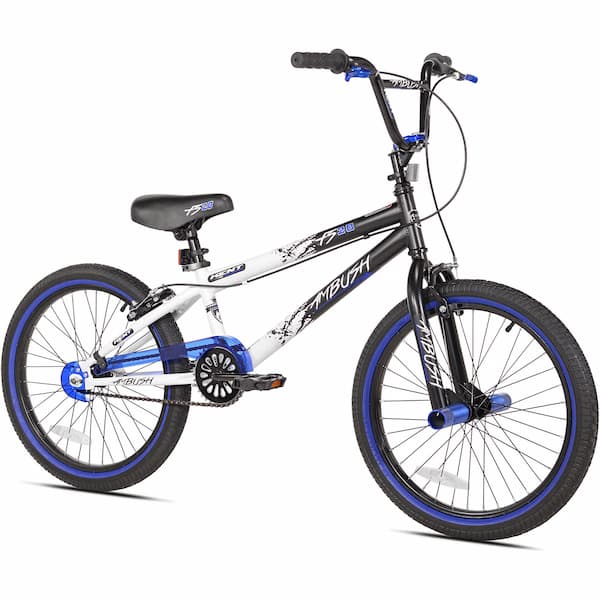
BMX bikes typically weigh 25 to 28 pounds. BMX bikes are made for racing and performing tricks. The weight of a BMX bike is a personal preference for each rider, but in general, lighter BMX bikes are preferable.
You’ll be able to jump higher and accelerate the bike’s rotation with a lighter BMX bike. The most expensive and lightest BMX bikes are made of titanium.
Grinding pegs are one feature that is typically reserved for BMX bicycles. To enable the rider to grind on rails and curbs, these pegs are mounted on the tires. Your bike’s weight will increase by as many as four pegs, depending on how many you have.
Check for Best BMX Bike Brands
Fat Bike
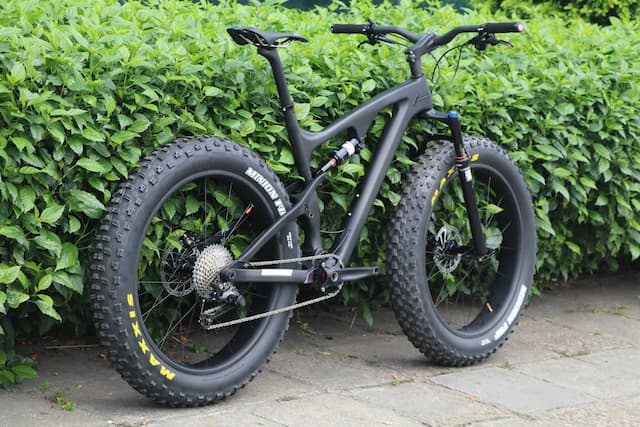
With the rise in popularity of fat bikes many people are asking, “What’s the weight of a fat bike?” A fat bike can weigh between 25 and 45 pounds.
Large, fat tires are fitted to these off-road bikes so that the rider can pedal over difficult or unstable terrain. Fat bikes are perfect for riding on the sand, snow, and mud. Some riders enjoy the aesthetic of the fat bike and use them like a mountain bike or even as a commuter.
Large tires are what make a bike a fat bike. The bike frame needs to be enormously strong and big enough to support the weight of the larger rims and the large tires. This adds weight to the bike.
Folding Bikes
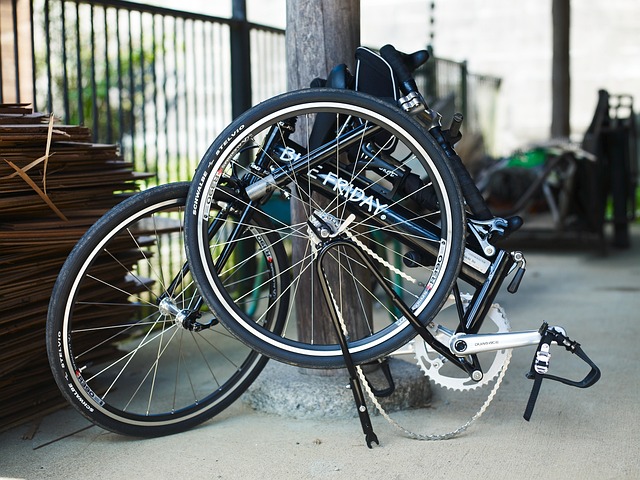
In general, folding bikes weigh between 7.45kg and 12.1kg. The additional strength needed to maintain the bike’s stiffness because of the hinge mechanism affects the weight of the bicycle. Most are made to fold up compactly to make carrying them easier. The distribution of weight will change with the smaller wheels.
Weight is obviously a significant factor in the enjoyment of riding them, and manufacturers seem to recognize this. Compared to regular bicycles, they are smaller.
Keep in mind that they might need to be carried up and down stairs or inside and outside of buildings. Of course, if you need to move them around for a while, you can just leave your ride unfolded and use the wheels to move the weight.
Beach Cruiser
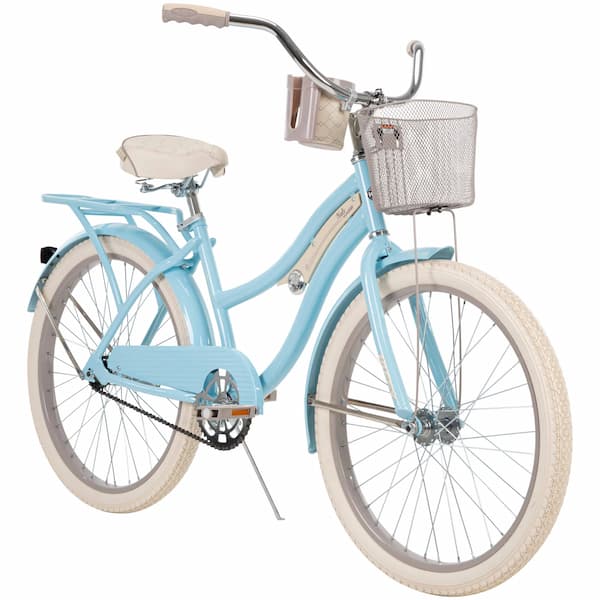
The ideal type of bicycle for cruising is a beach cruiser. Make sure you are rigged with something to hold your drink and take a leisurely ride. They can be fairly heavy because they are designed for comfort rather than speed. Typically, the lighter the bike is, the less expensive it is.
As I mentioned, some beach cruisers will weigh more than the average 35 to 40 pounds.
Large handlebars are a feature of beach cruisers, reducing the need for stooping by the rider. For a more comfortable ride, they frequently have wider tires. Many beach cruisers have extra-large seats to give the rider’s bottom more padding.
They are also tough bikes that can survive a minor collision.
Check for more information about cruiser bikes.
Factors That Affect Your Bike’s Weight
The weight of the bicycle is directly influenced and affected by numerous factors. Here are some of the determinants that you should consider before choosing your bike:
User’s Body Weight
You should first consider your weight before making a purchase. Your body weight is a crucial factor to take into account because it can directly impact how you ride. Get a heavier bike if you are thin and light.
It will maintain the stability and balance of your ride. Because they will evenly distribute the weight when riding, heavier bikes can complement light users.
If you are larger than average, you should seek out a machine that weighs about the same as a bicycle or less. In this way, there is less gravitational pull on you while driving. The ability to accelerate more effectively on heavier bikes on hills and steeper slopes is another benefit.
Accessories You Use When Riding.
The accessories you use while biking should also be taken into account. Consider buying lighter bikes if you tend to wear a lot of bike accessories. When riding, the weight of the accessories like the suspension, rims, helmets, and brakes can also increase.
Weight of Wheels
The wheels of some cyclists’ bicycles are often customized. The structure of your bike as a whole may be added weight by the wheels. The more weight they can support depends on the wheels you select.
Materials Used
A bike’s weight is influenced by the materials used in its construction. There are robust materials that add weight to the product’s overall structure, while other materials keep the weight to a minimum.
Here are the common materials used for bikes:
- Carbon fiber is a strong material normally used in bike manufacturing. It’s flexible and strong while being lightweight. The building of bicycles is strengthened by its use.
- Carbon steelis more common than carbon fiber. It is a low-cost, highly durable material with a high tensile strength. In comparison to carbon fiber, carbon steel tends to be heavier and is primarily used in the construction of bicycle frames.
- Aluminumis both cheap and light. These days, a lot of materials are used to make bikes because they are less expensive. In addition to these features, it gives users safe rides.
- Titaniumis expensive but gives a strong and light component to the structure of your bike. It is additionally lighter when compared to steel.

Why is a Bike’s Weight Important?
How quickly you can accelerate and ride a bike depends in part on the weight of the vehicle. It doesn’t really matter that there is a 1 pound gap in this situation. But even a 20-pound weight difference will leave a significant gap.
Given that it weighs a few pounds more, this might not matter if you ride as a hobby. Instead of shelling out a lot of cash for a bike that is lighter, it will be more profitable and economical for you to lose weight in this situation. However, in competitive cycling, even a few seconds can mean the difference between first and second place. Naturally, the weight of the bike is crucial. Cycling enthusiasts won’t notice much of a difference in weight from a bike that weighs only a few pounds.
The weight of a bike is very important to bike commuters, as I already mentioned. This is especially crucial if you have to lift your bike on the road to get from your house to your office. As a result, you might want to buy a bike that is either somewhat lightweight or at the very least not too heavy to lift.
I’ll go into great detail about why various types of bikes weigh what they do in the remaining passages of this essay. I’ll talk about the weights of traditional bikes as well as mountain bikes, hybrid bikes, road bikes, cruiser bikes, kids’ bikes, etc.
How Bike Weight Affects Your Riding Performance
A lightweight bike will benefit you more when cycling up steep inclines when it comes to performance. Due to your bike’s light weight, riding against wind resistance on flat ground may be challenging if the wind is blowing hard.
Competitive cyclists typically choose lightweight road or hybrid bikes because the lighter frames of these bikes can increase their speed by six to ten seconds.
However, commuters ride primarily on flat surfaces. Consequently, a bike with a light frame may be a significant disadvantage for them. As a result, commuters will benefit much more from a heavier bike than from a lightweight one.
Frequently Asked Questions
Some of the most frequently asked questions about the bike weight are answered in this section. Take a closer look so you can provide your own response.
How Much Does a Bike Weigh in Lbs?
Although there are many variables that affect this, the materials used to make a bike have the biggest impact. For instance, the weight of a typical bike can range from 17 to 80 lbs. Road bikes only weigh about 17 lbs. A mountain bike typically weighs about 25 lbs. in the interim. Additionally, 80 lbs. is the maximum weight limit for electric bikes.
Is 15kg Heavy for a Hybrid Bike?
The average weight of the hybrid bikes on the market is 28 pounds. 13 kg). Therefore, 15 kg is not particularly heavy for a hybrid bike. The type of material used to build the bike will determine everything, but the road you ride on is more crucial.
How Much Does An Average Road Bike Weigh?
A typical road bicycle weighs about 18 pounds on average. Make sure that your road bike, including the cages and pedals, does not weigh more than this amount.
Are Heavier Bikes Harder to Ride?
In reality, heavier bikes are not more challenging to ride. They merely give you different sensations than riding a lighter bike. With heavier bikes, you need to pay a little more attention to avoid falling over at very slow speeds. In contrast to their lighter counterparts, they also begin to balance themselves more slowly.
Conclusion
It’s true that there isn’t a set weight for bikes of all shapes and sizes. The materials used for the frame and other parts or components will determine everything. A bike made of stainless steel will weigh more than one made of aluminum. A fiber carbon bike, on the other hand, is regarded as the lightest bike because it is even lighter than the two models. All you have to know is that the bike’s wheels and frame are its two heaviest components. They will therefore calculate the overall weight of a bike.



